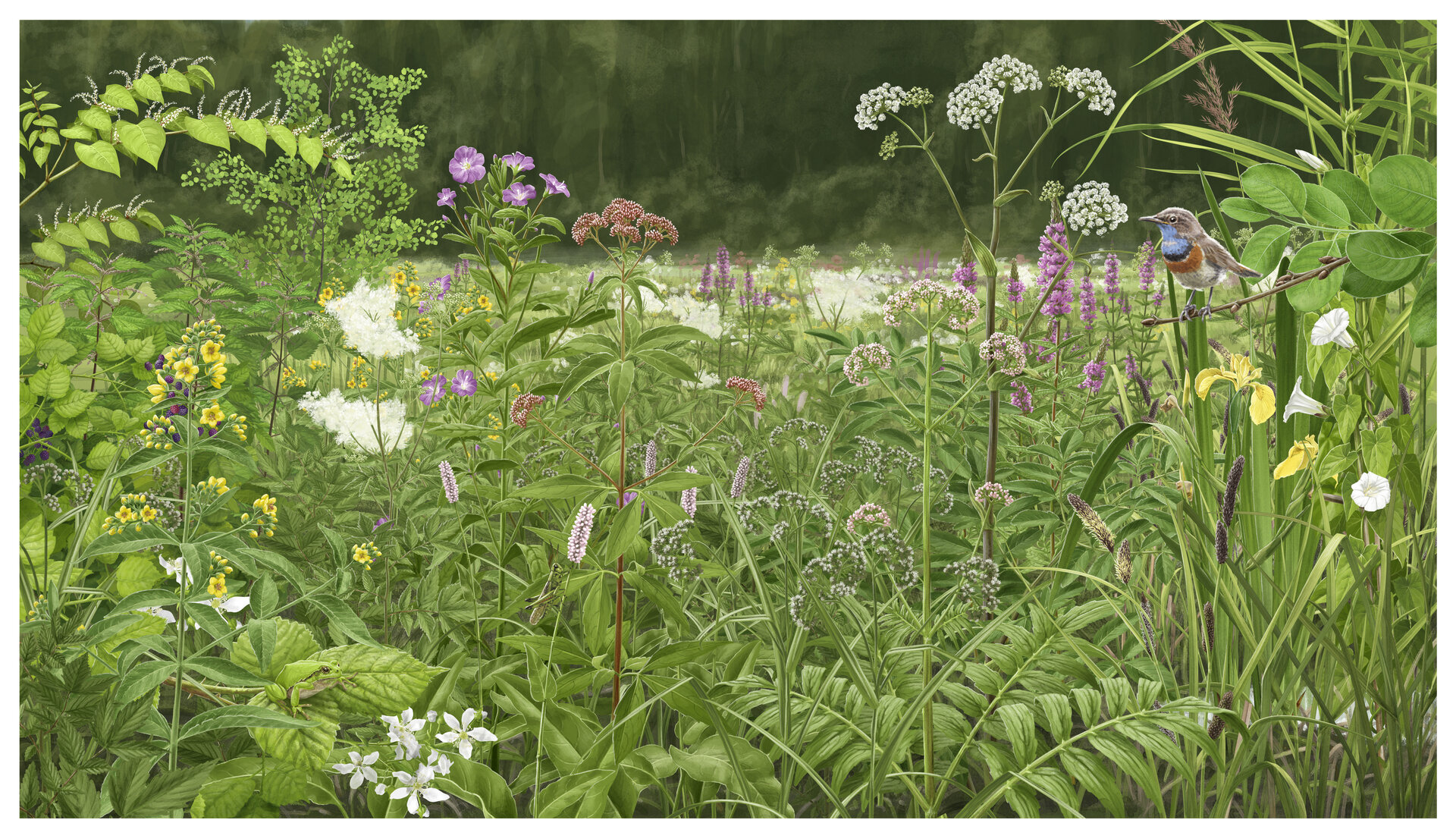
Damp tall-herb swamps en fringe communities (6430) can be beautiful flower-rich biotopes full of insects and other life. In the drawing below of this vegetation, you can discover typical species and characteristics.
To check whether a tall-herb swamp is in good condition, we look at:
- The number and cover of typical species such as meadowsweet, cabbage thistle, hairy willowherb and others.
- The amount of grasses should not have too much grass but should contain many tall flowering plants.
- The cover of disturbance indicators should be sufficiently low. By this we mean species that indicate desiccation and eutrophication. Examples of such negative indicators are greater nettle, bramble, great manna-grass, creeping thistle, curly plumeless thistle and couch grass.
- A low number of trees and shrubs is important. Afforestation of a meadow indicates too extensive management. If we do not mow fringe communities every few years, they will become forested and they will disappear.
- The absence of invasive exotic species. A tall-herb swamp is quite susceptible to invasive exotics such as Himalayan balsam, Japanese or other invasive knotweed, Giant hogweed and others. The common management that consists of mowing once every 2 to 5 years is favourable for this species. So the sites with invasive exotics need to be managed more intensively than the rest of the swamp.
- The presence of water dynamics. Well developped wet tall-herb swamps are influenced by flooding. This can be via surface water from streams or via groundwater. The presence of bare soil or pioneer species indicates these favourable dynamics.
This page and interactive drawing received financial support from the EU-life programme(opent nieuw venster) more specifically from the LIFE Green Valley project.(opent nieuw venster)

